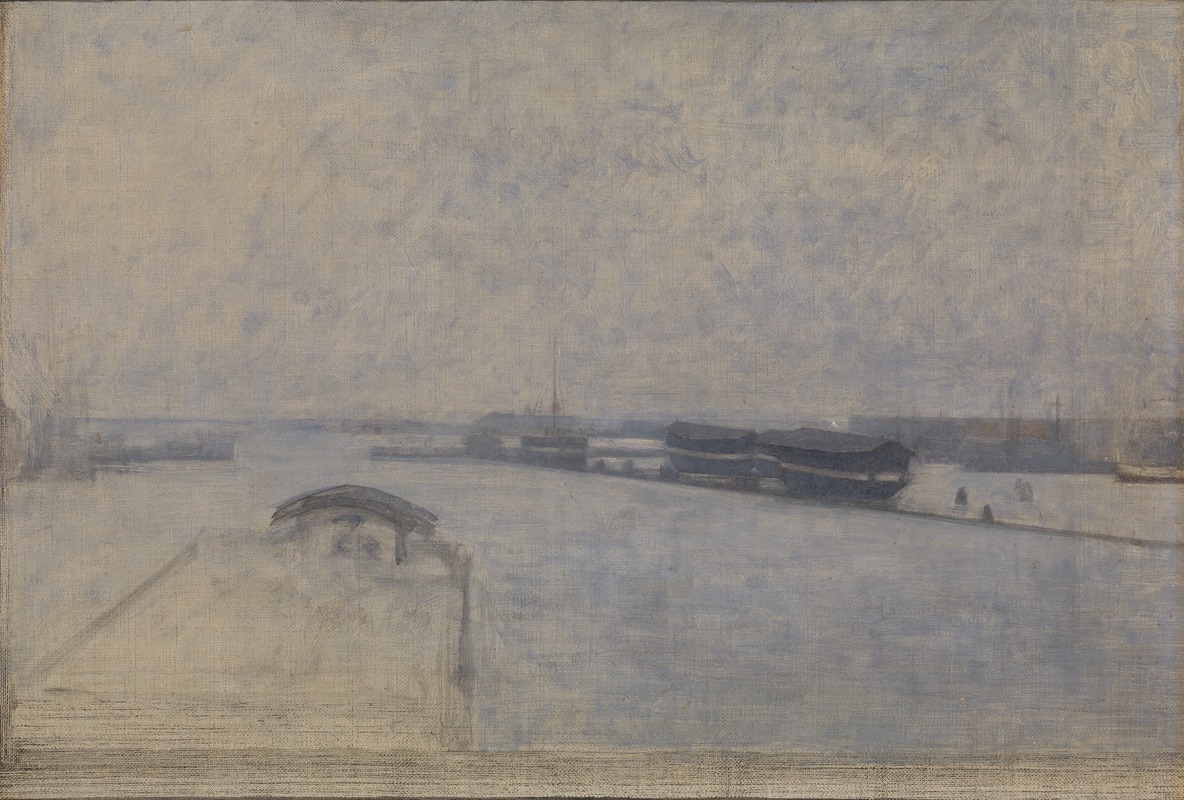
The Harbour of Copenhagen seen from Kvæsthusgade
A hand-painted replica of Vilhelm Hammershøi’s masterpiece The Harbour of Copenhagen seen from Kvæsthusgade, meticulously crafted by professional artists to capture the true essence of the original. Each piece is created with museum-quality canvas and rare mineral pigments, carefully painted by experienced artists with delicate brushstrokes and rich, layered colors to perfectly recreate the texture of the original artwork. Unlike machine-printed reproductions, this hand-painted version brings the painting to life, infused with the artist’s emotions and skill in every stroke. Whether for personal collection or home decoration, it instantly elevates the artistic atmosphere of any space.
Vilhelm Hammershøi's painting The Harbour of Copenhagen seen from Kvæsthusgade is a work by the renowned Danish artist, known for his subdued palette and atmospheric compositions. Painted in 1905, this artwork captures a view of the Copenhagen harbor as seen from Kvæsthusgade, a street located near the waterfront in the Danish capital. The painting reflects Hammershøi's characteristic style, emphasizing muted tones, a sense of quietude, and a focus on light and shadow.
The composition depicts a section of the harbor with a restrained and almost minimalist approach. The scene includes architectural elements, such as buildings and possibly ships or masts in the distance, though these details are rendered with a soft focus that prioritizes mood over specificity. Hammershøi's use of a limited color palette, dominated by shades of gray, beige, and soft blues, creates a contemplative atmosphere, inviting viewers to reflect on the interplay between urban life and the natural environment.
Hammershøi often drew inspiration from his surroundings in Copenhagen, and this painting is no exception. The harbor was a significant part of the city's identity during the late 19th and early 20th centuries, serving as a hub for trade and maritime activity. However, Hammershøi's interpretation of the scene is not a bustling depiction of commerce but rather a serene and introspective portrayal, consistent with his broader body of work.
The painting is an example of Hammershøi's ability to transform everyday scenes into poetic and timeless images. His approach to composition often involved a careful balance of geometric forms and open spaces, and this work demonstrates his mastery of these elements. The subdued and almost monochromatic palette is a hallmark of his style, lending the painting a sense of stillness and introspection.
The Harbour of Copenhagen seen from Kvæsthusgade is housed in the collection of the Statens Museum for Kunst (National Gallery of Denmark) in Copenhagen. The museum holds a significant number of Hammershøi's works, reflecting his importance in Danish art history. Today, Hammershøi is celebrated as one of Denmark's most distinctive painters, and his works continue to be admired for their unique ability to evoke emotion through simplicity and restraint.
This painting is a testament to Hammershøi's skill in capturing the essence of a place while imbuing it with a sense of timelessness and quiet beauty. It remains an important piece within his oeuvre and a valuable representation of early 20th-century Danish art.


















